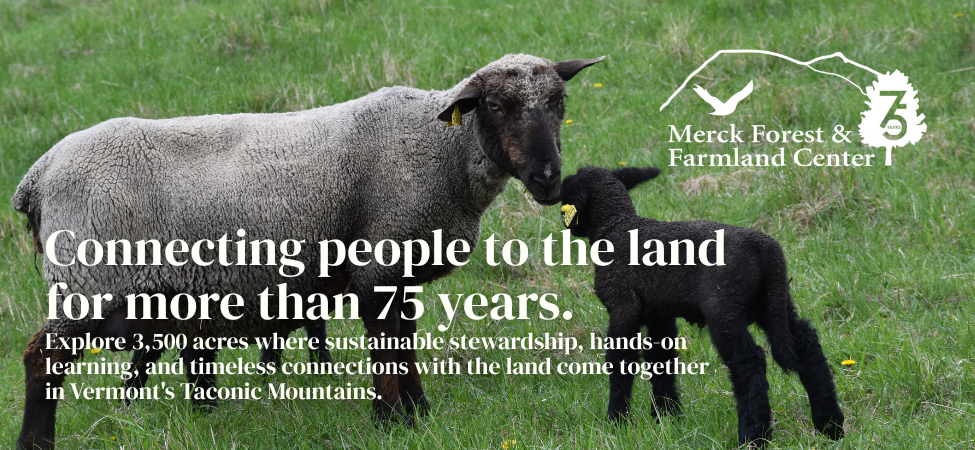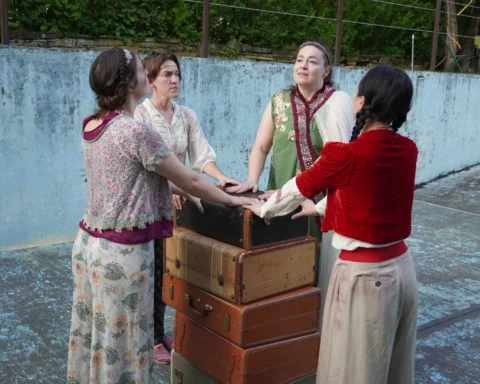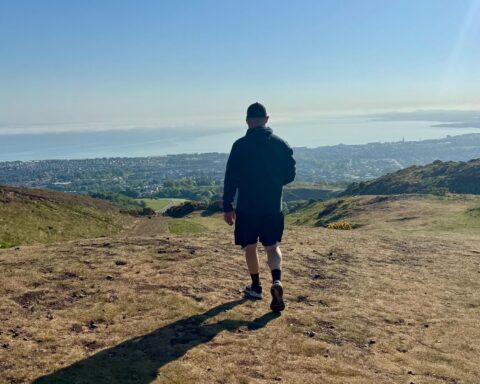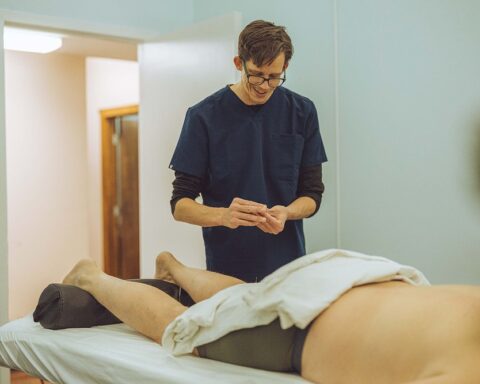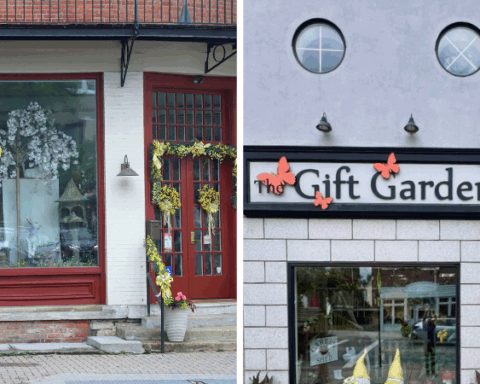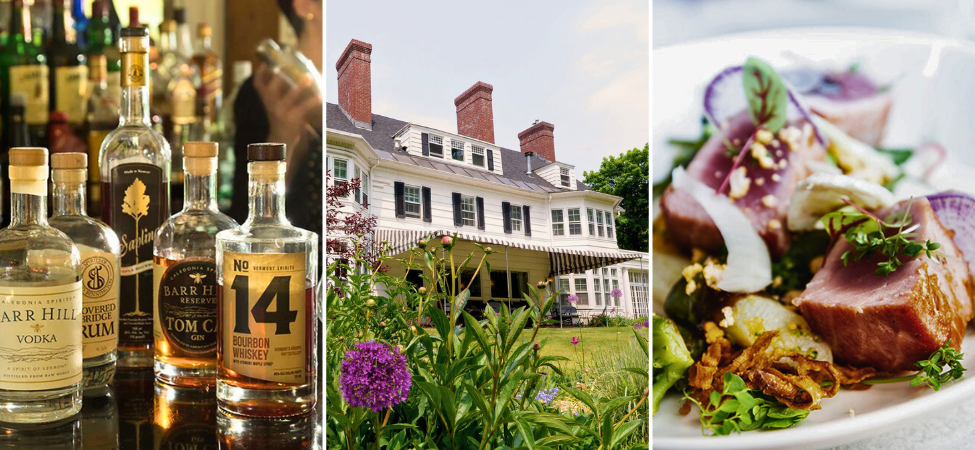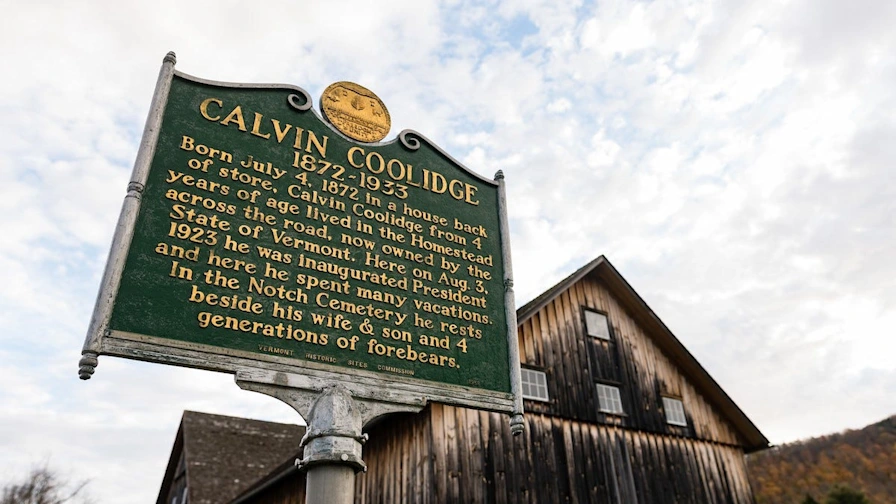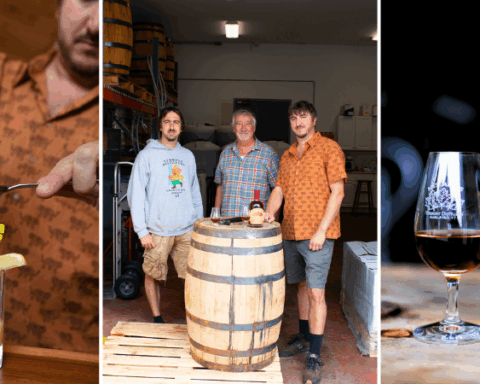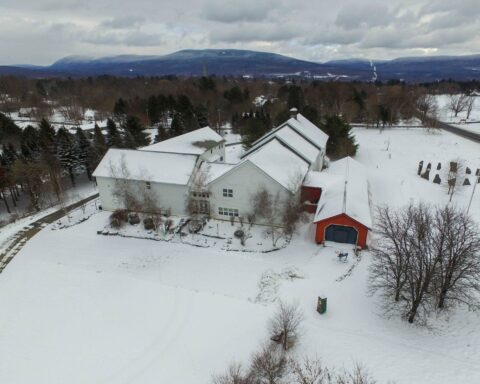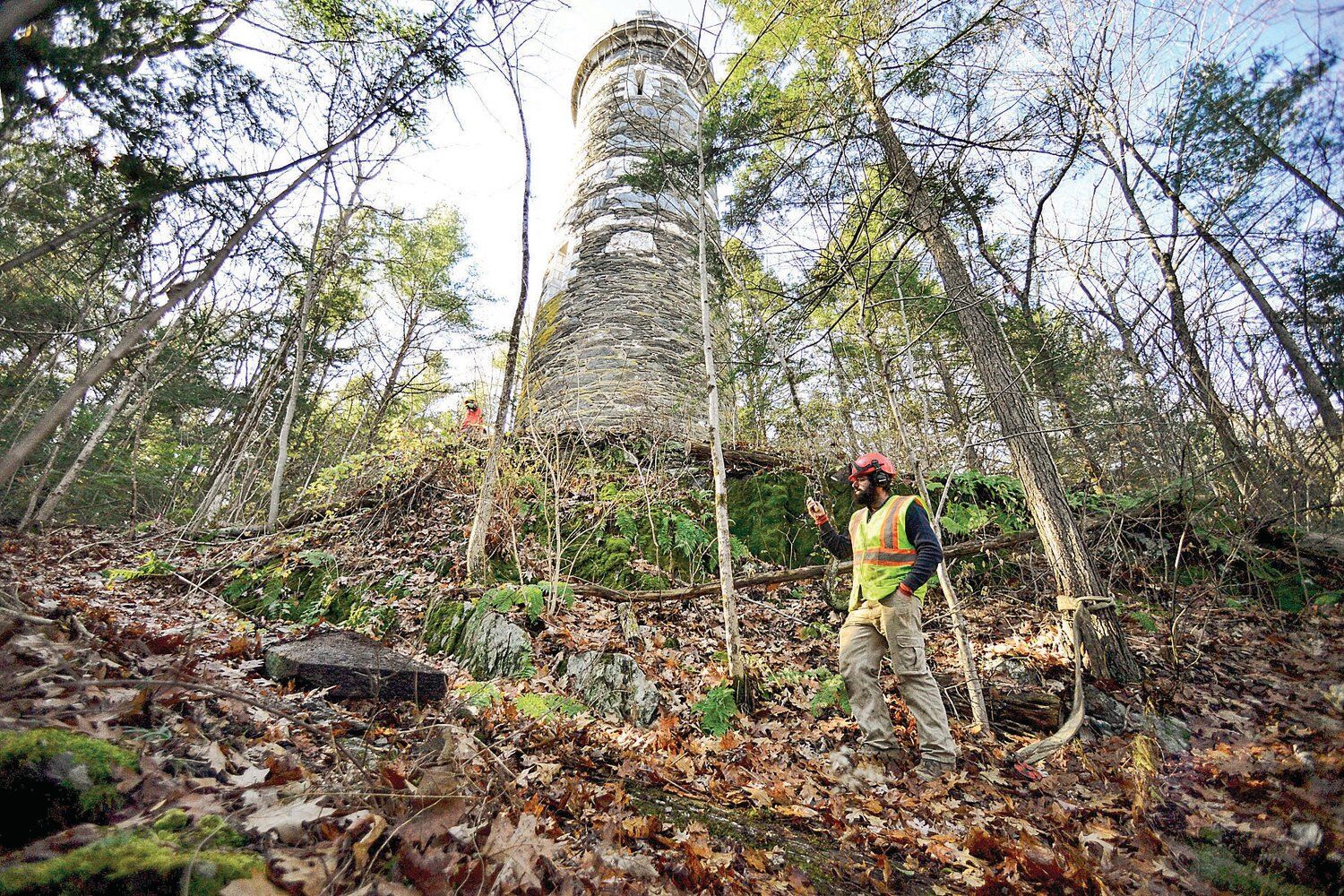By Andrew McKeever, Vermont Country correspondent.
Up on Rupert Mountain at the Merck Forest and Farmland Center sits the Spruce Cabin. It’s a short distance from the intersection of Old Town Road and Kouwenhoven Road. You have to know where to look to find this on your map or GPS. It’s about a mile along a walking and hiking trail that used to be one of the roads for getting from one side of Rupert, Vermont to the other. Nowadays, it’s where you’d stroll along when in search of a place to get away from it all.
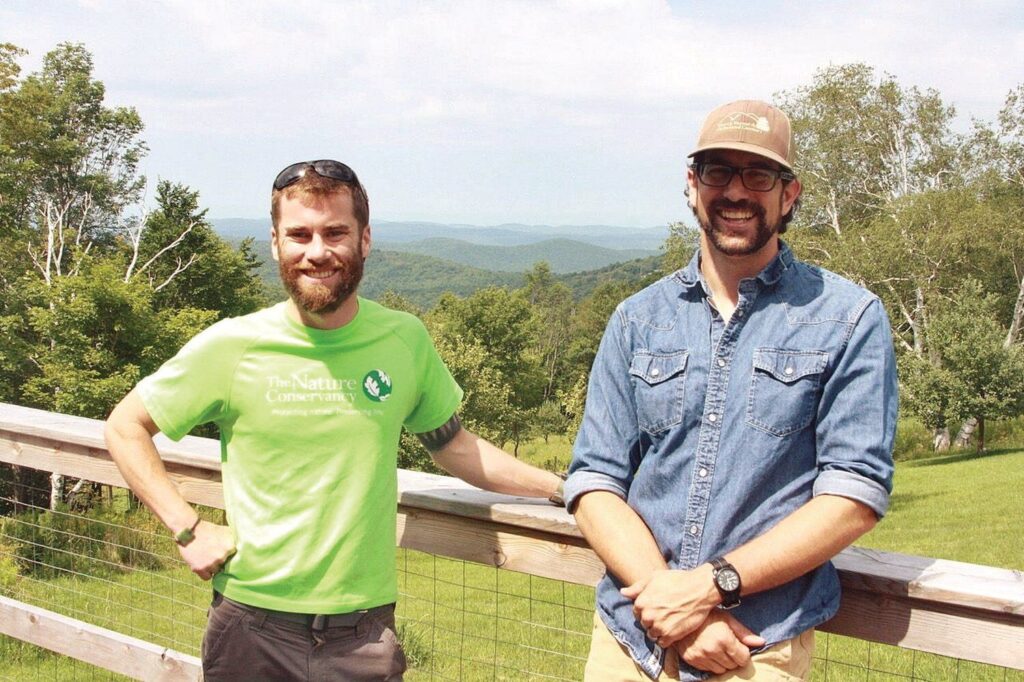
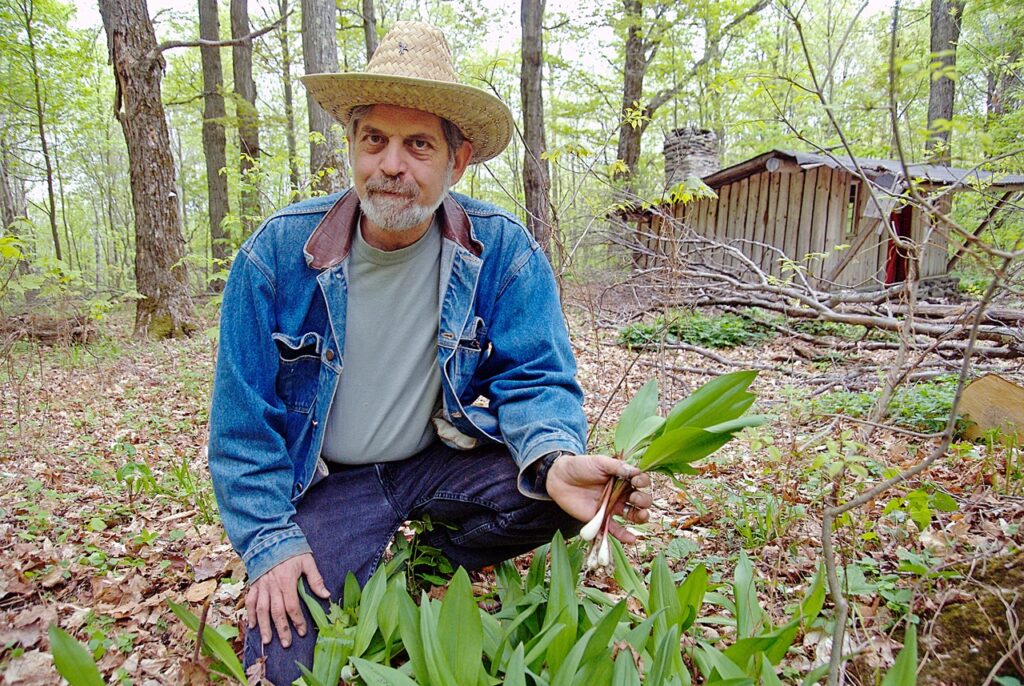
That’s part of what draws Ethan Latour, a former resident of nearby Dorset, back to the cabin, or one of the others up on the mountain, usually at least once a year. Spruce is one of nine cabins scattered around the more than 3,000-acre Merck Forest preserve, first established in 1950, when George Merck, of the pharmaceutical firm that bears the family name, consolidated several former farms into Vermont’s first environmental preservation trust.
Merck’s network of backcountry cabins is rustic by design. There’s no electricity, no running water. Guests bring what they need, pack out what they don’t use, and find, in exchange, deep stillness and simple joy: morning light through the trees, wind brushing across a clearing, stars unfurling above the forest canopy.
There are also a few more modest “shelters” for the getaway, as well as other opportunities for camping out with a tent.
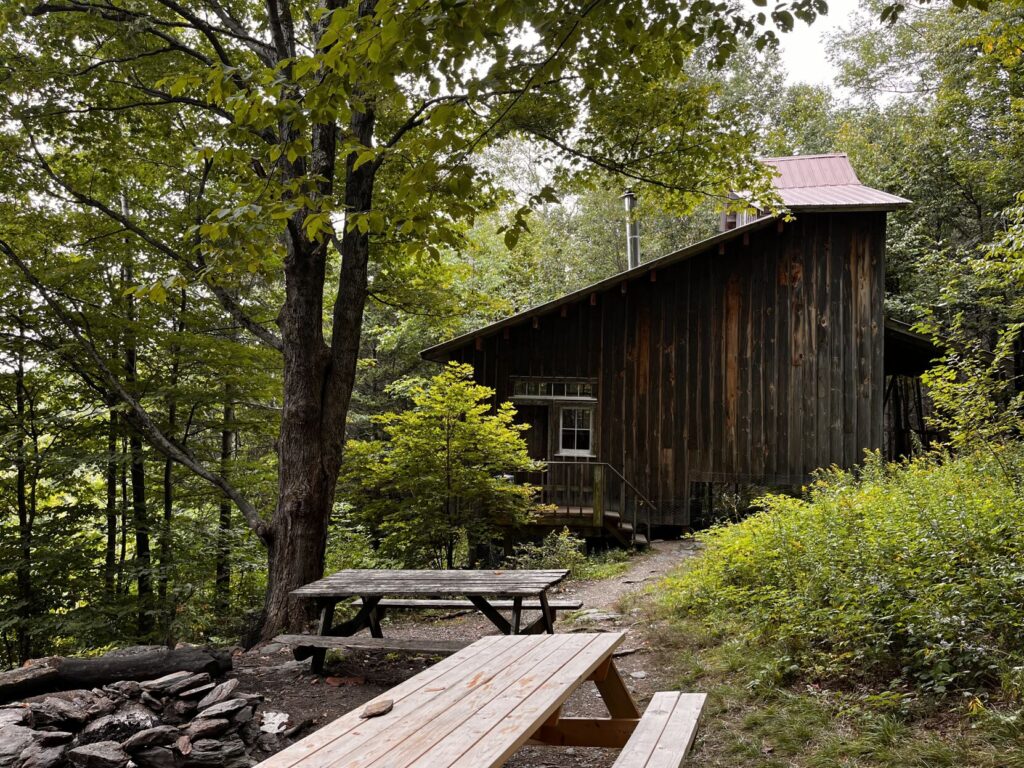
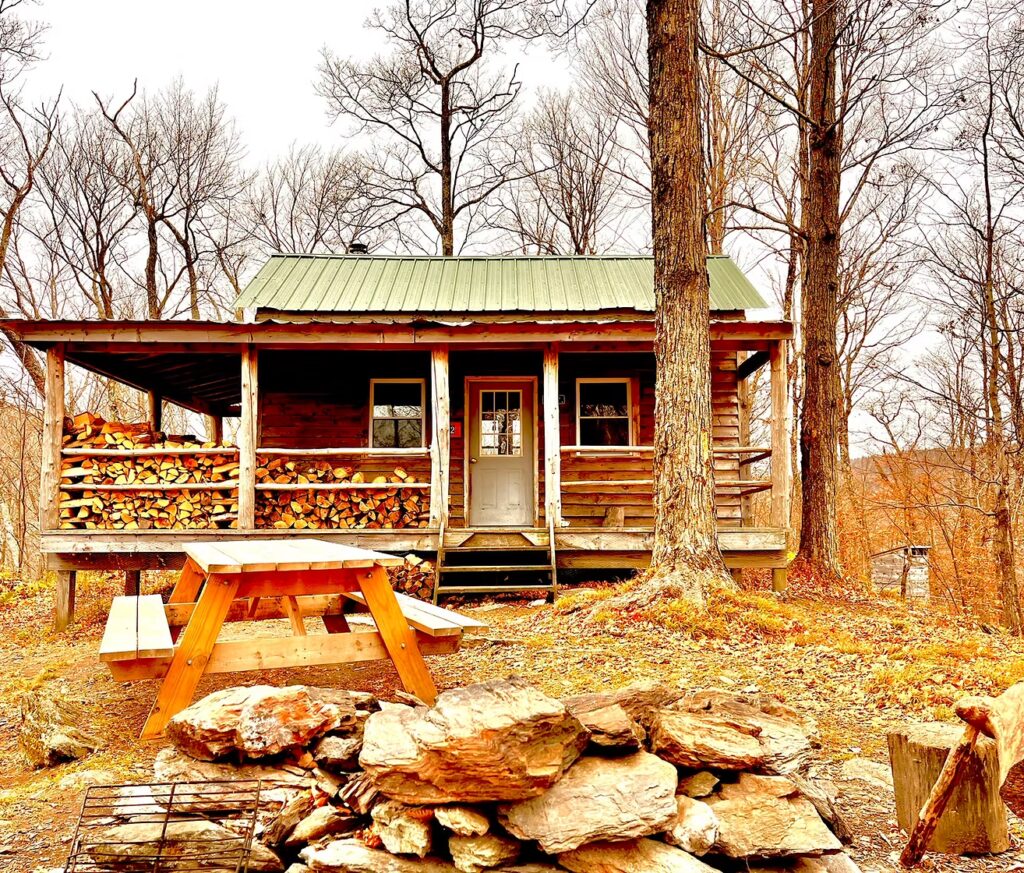
Ethan started making the pilgrimages after finishing college. Retreating there over a weekend with some friends, going for hikes on the extensive trail network, and cooking dinner over the open fire pit was his definition of the perfect weekend.
“You can hoof the whole trail network, which is kind of cool,” he said. “Being outside, having direct access to thousands of pristine Vermont acres – you get to get away and disconnect.”
To help with the disconnection, cell phone service is described as “unreliable” in the woods of Merck Forest. Many might argue that this is one more reason to head out there.

He and his girlfriend Tori had planned to spend a weekend there during September 2020, taking in the glorious Vermont fall foliage, and away from the stresses of the ongoing COVID pandemic. So what better place was there, he thought, to pop the big question and propose a marriage. It was magical.
She said yes.
Magical is also a good way to describe the hiking trails cut through all parts of the preserve, providing visitors multiple opportunities to experience nature in all its forms – wildlife, forestry and farmland.
Old Town Road is one of the main trails and follows, as the name suggests, the path of one of the earliest roadways that used to connect the several farms that used to dot the area. But there are many more – more than 30 miles of them altogether. Some are wider and easily walkable, while others get a little narrower and give the feeling of burrowing into the forest. Aside from a few meadows and open spaces here and there, just about anywhere along the trail network will have you feeling forest. And since they are etched into a mountain, you go up and down, but there are also flat and level stretches to balance them out.
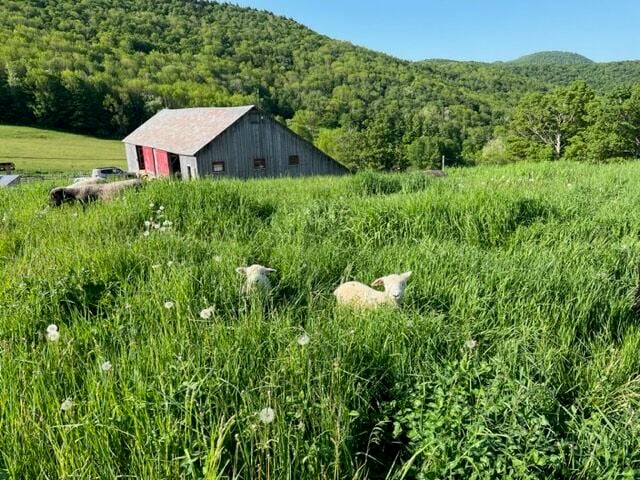
Then there are the views – the one from Antone Mountain, which is 2,600 feet in elevation, is pretty spectacular. There is unbroken forest as far as the eye can see. But you don’t have to go too far from the visitor’s center and parking area before you get to what might be one of the most scenic views you might find anywhere. That would be the one from the Frank Hatch Sap House, where Merck’s maple syrup is boiled during the sugaring season in March and April.
During the syrup season, you are likely to meet Hadley and Mike Stock. Hadley is the Farm Manager, and Mike is the Resource Manager. Together, they help oversee the special sugaring days when the public is invited into the sap house to see, up close and personal, how the estimated seasonal production of 7-800 gallons of maple syrup happens.
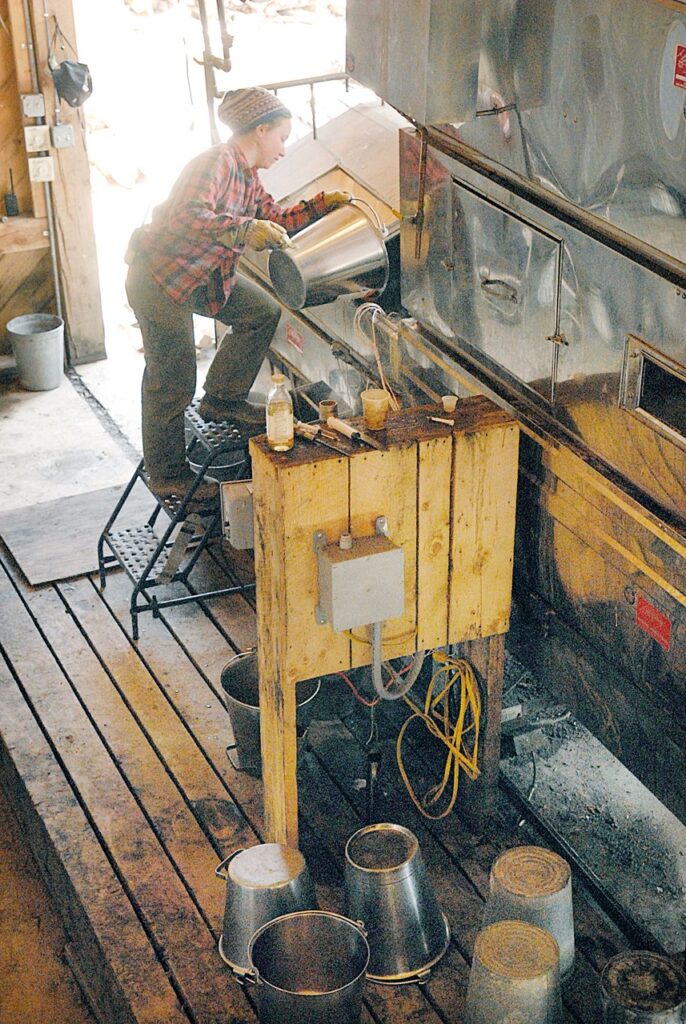
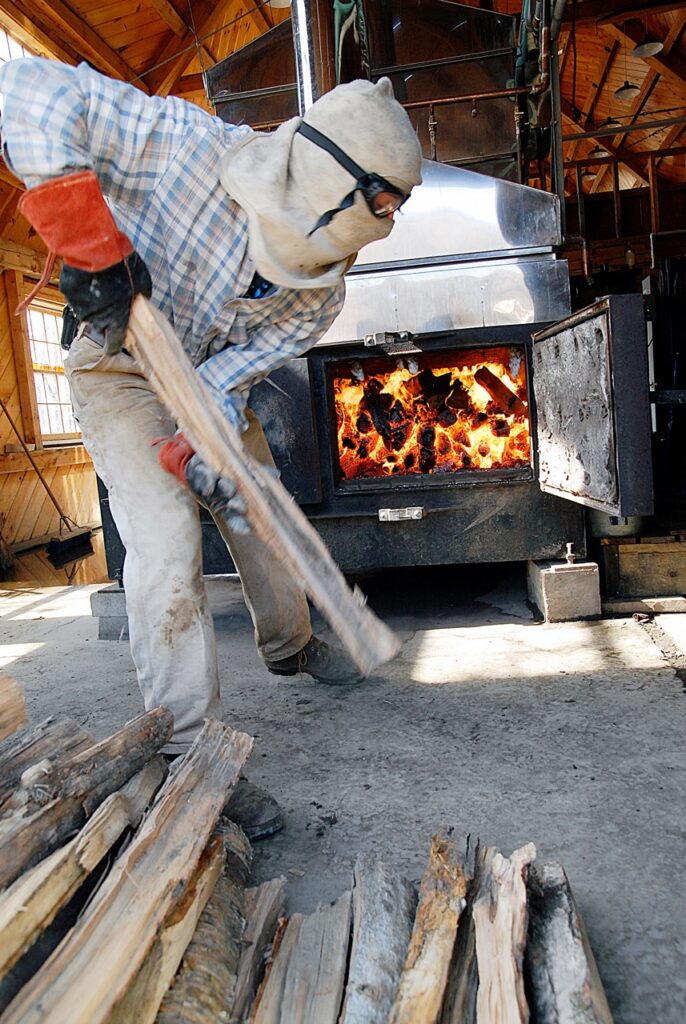
“We’re mapled together,” Mike says as he studies the steam rising from the evaporator. “The couple that sugars together, stays together,” Hadley replies with a smile. The north-facing sugarbush, plus the higher altitude, makes for a longer season, she added. And this past winter was a bit colder than the recent ones, which was a plus.
While the sap boils below during sugaring season, a walk back upstairs and out to the back deck reveals one of the most sweeping vistas imaginable. An open field stretches before you, evolving into forest and across the immense valley between the Taconic Mountain range, where you are in Merck Forest, and over to the Adirondacks. It’s a panorama that mesmerizes, especially on a clear day.
What you are looking at is part of a massive forest block rivaled by a select few. It provides migratory shelter for countless animal and wildlife species and is a positive factor in the climate change challenges we face.
Merck is part of a larger forested region that includes the Adirondacks, the Taconics, and the Green Mountains. It extends further north into Quebec and eastward to New Hampshire and Maine.
“What the forest block provides is deep forest space for animals who can’t survive in ‘edge’ forest,” says Rob Terry, the executive director of the Merck Forest and Farmland Center. “What we do here is we engage visitors in an exploration of how we can exist in this landscape and provision to meet our needs from this landscape with farm and forest products, but do it in a way intended to improve the ecological health.”
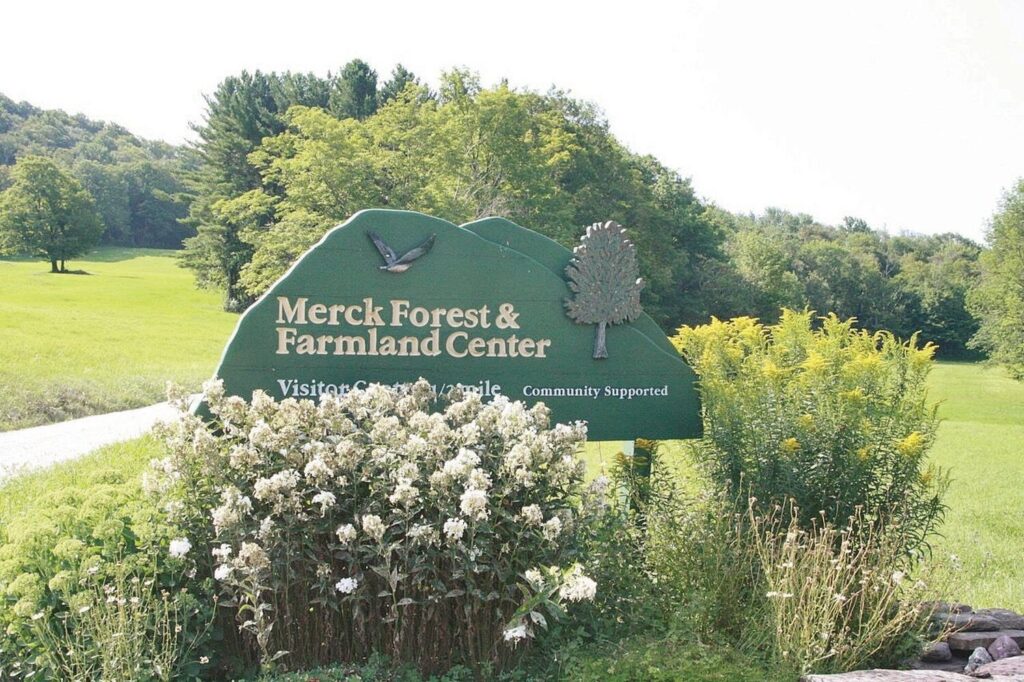
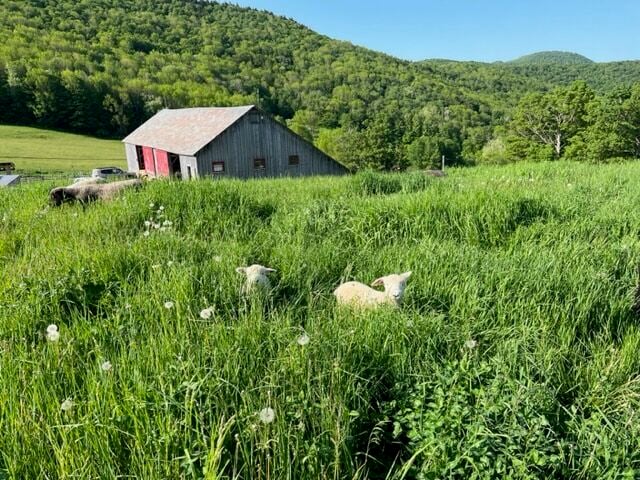
The forest block, of which the Merck Forest and Farmland Center is part, is also crucial in the struggle with climate change. Trees soak up carbon emissions that surge into the atmosphere from fossil fuel use. They are critical in mitigating them as we stagger towards replacing fossil-based fuels with renewable ones.
What might be even more remarkable about the forest that fills most of the Merck Forest and Farmland Center is that at one point in the not-so-distant past, most of this land was completely denuded of trees, cut down for lumber and potash but mainly to provide grazing land for sheep whose wool was vital to the local economy of the region for much of the 19th century.

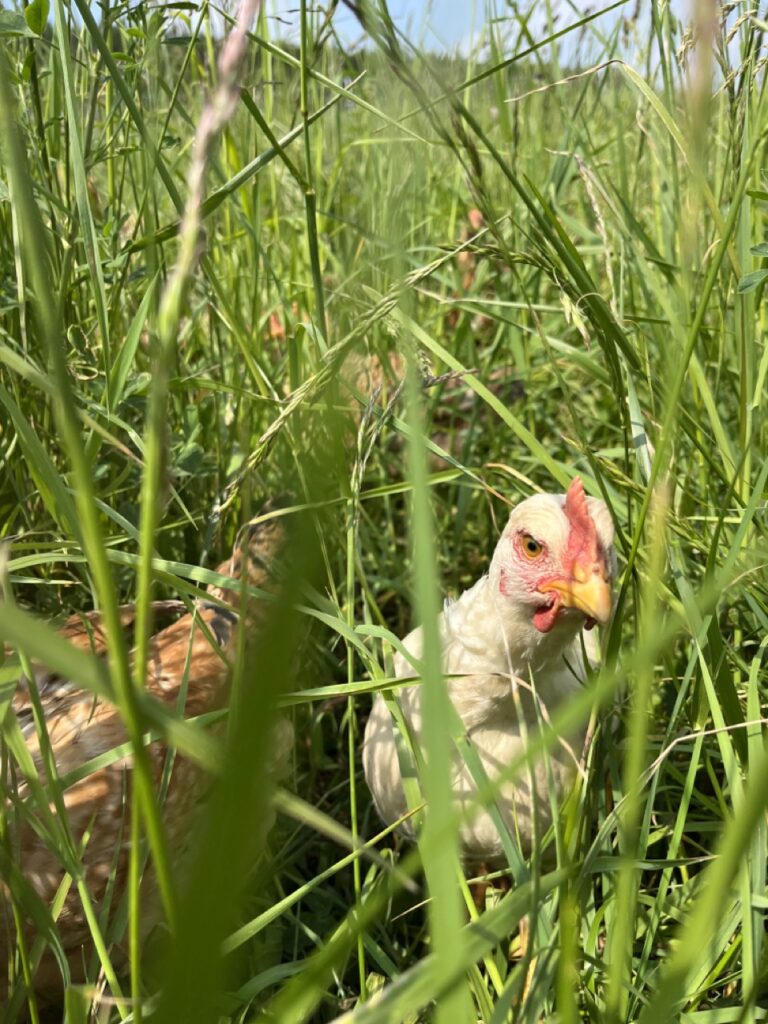
Beginning in the 1780s, farms began to spring up around Rupert, Vermont, which sits slightly to the west of the Merck Forest.
As ecologist Charles V. Cogbill stated in his extensive study of the 3,000 acres that today comprise the preserve.
“By the 1850’s, nearly two thirds of the land that is now Merck Forest was cleared for pasture and hay, and hundreds of sheep roamed the mountainsides. Only the very tops of the mountains remained forested. After the 1850’s the demand for sheep dropped and much of the land eventually began to revert to forest. Butter, cheese, and potatoes became the main crops through the 1900’s. Over time all but one of the farms gradually failed and were abandoned. The last operating farm on Merck Forest land was the Harwood farm that operated in the 1940’s. In 1950 that became Merck Forest.”
The old-growth forest that had stood unmolested by human hand since the retreat of the Ice age glaciers about 12,000 years ago gave way rapidly as settlers sought to carve a living from the mountain and its range of hills and ridgelines. The trees and vegetation we see today are of relatively recent vintage.
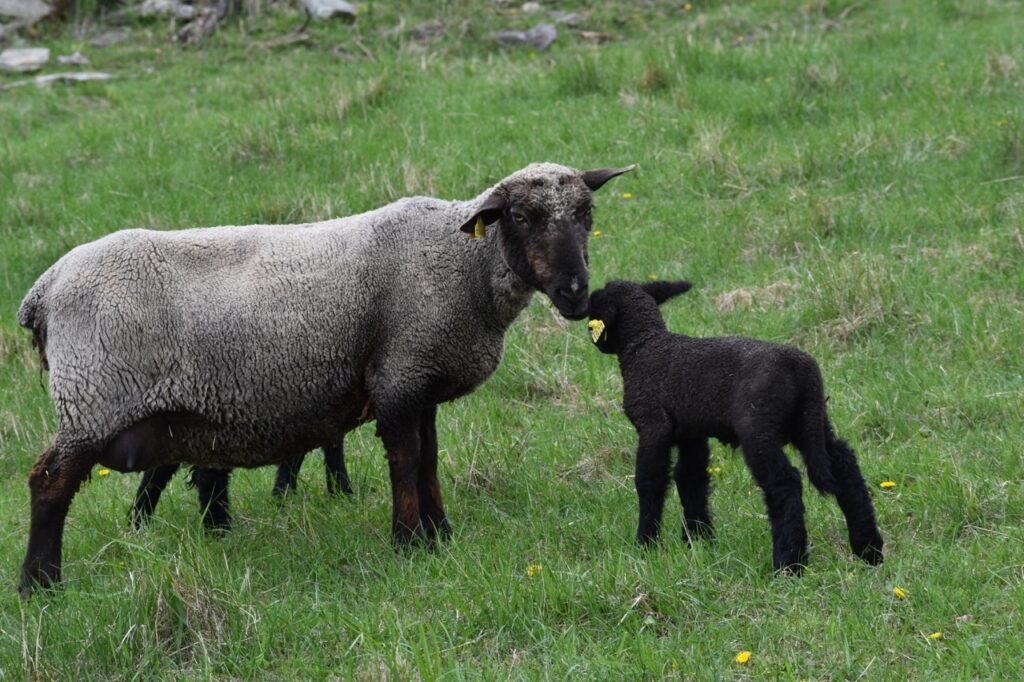
It’s a forest that is still recovering from the deforestation that occurred 200 or more years ago – but it looks different from the forest that had been here before, Rob Terry said.
“Our work now is to try and support this forest to restore it to its most resilient characteristics,” he said. “Having a beautiful and accessible resource within a day’s drive of so many people makes us special.”
How this resource became available is an interesting story in itself.
George Merck was the chief executive officer of Merck Pharmaceuticals, a drug manufacturing firm based in New Jersey and established in 1891 by George Merck’s father, who emigrated to the United States to set up an American company branch. The firm dates its original founding back to 1668 in Darmstadt, Germany. During the 1940s, George Merck bought up a few property parcels from local farmers who could no longer make a go of it in agriculture. The original idea was to create a place for their family’s recreation. By 1950, the acquisitions were more or less complete, although about 400 acres of property had been added since then. In 1950, the Vermont Forest and Farmland Foundation, as it was first called, was one of the first such land management foundations established in the United States. It was renamed the Merck Forest and Farmland Center after George Merck’s passing in 1957.
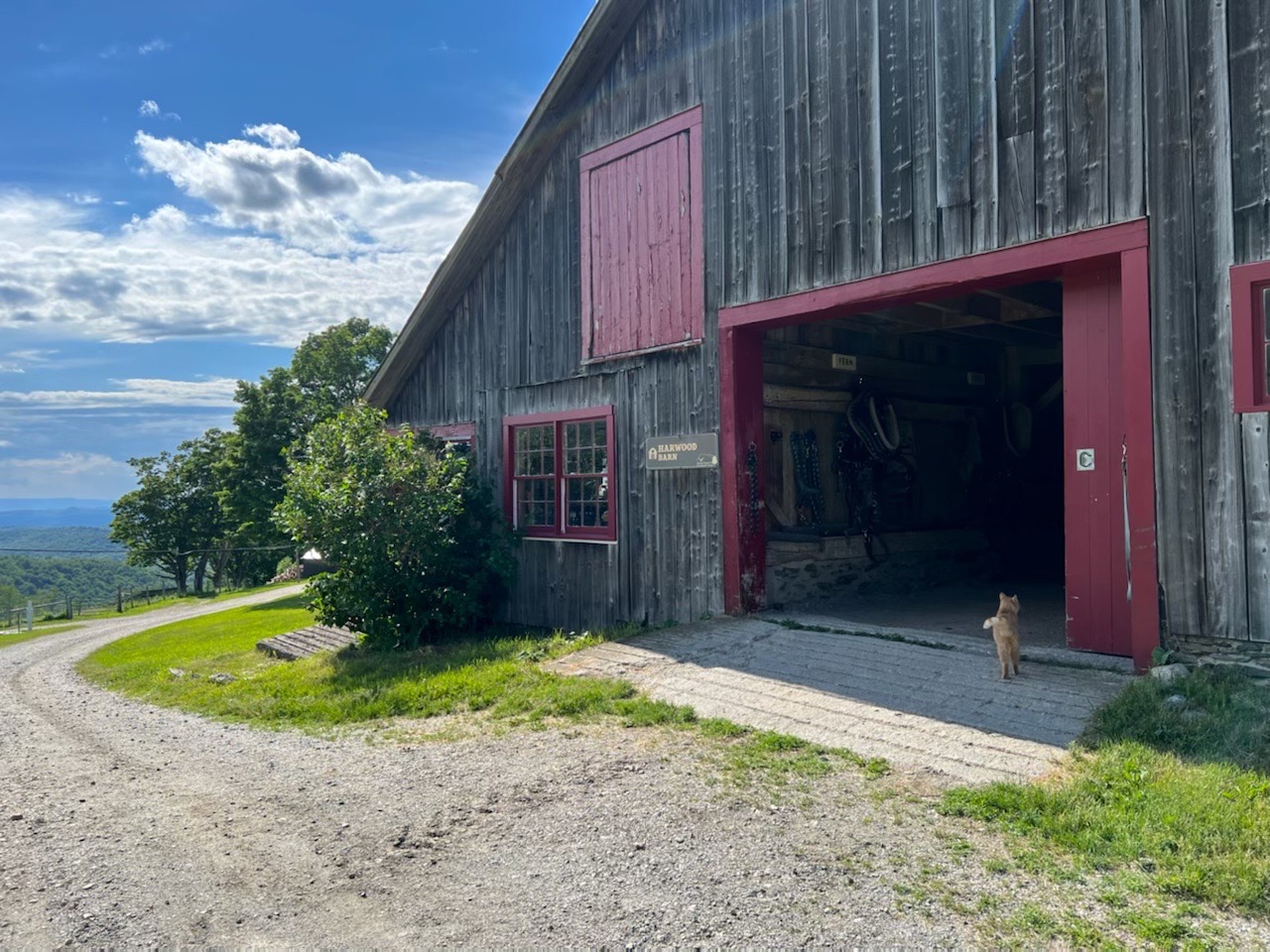
Merck Forest and Farmland Center is planning some special events for the 75th anniversary of its founding and establishment as a wildlife and ecological preserve. On July 19, from 11-3 pm, the Summer Explore-A-Thon will be held, where the curtain comes off all the ways you can enjoy the outdoors – through art, observation, science, outdoor skill building, and more. The Harvest Festival kicks in on September 20, celebrating woods and timber. This is where fans of forestry can explore the woods, check out the timber processing equipment, and press cider.
“The 75th anniversary is a great chance to reintroduce the public to the MFFC,” said Tom O’Handley, the center’s senior development director. “It’s an amazing organization and property that ties into other places like this around the state. It’s an important ecosystem. We’re not only working lands and landscapes – it’s part of a place for animals that are migrating through here.”
The working lands and landscape part is worthy of note. In keeping with its not-so-distant agricultural past, visitors can stop by the old Harwood Barn, built in 1837 by the family who owned and operated one of the farms that used to cover the area, and visit with the chickens, lambs, pigs and horses. Along with the opportunities for learning more about sustainable forestry practices, the farm is part of the educational programming MFFC offers, which has grown its connections to local schools and libraries, said Elena Santos, the education manager.
“Something that winds up being a major hit with the kids is just letting them play, unstructured,” she said. “I overhear conversations between kids about problem solving and figuring stuff out.”
The forest is restoring itself with human help. Trees are harvested selectively for their timber, which is often used onsite for new construction, like at the timber frame building next to the Harwood Barn and just up the hill from the Sap House. That’s where you’ll likely find Dylan Durkee, the fleet and facilities manager.
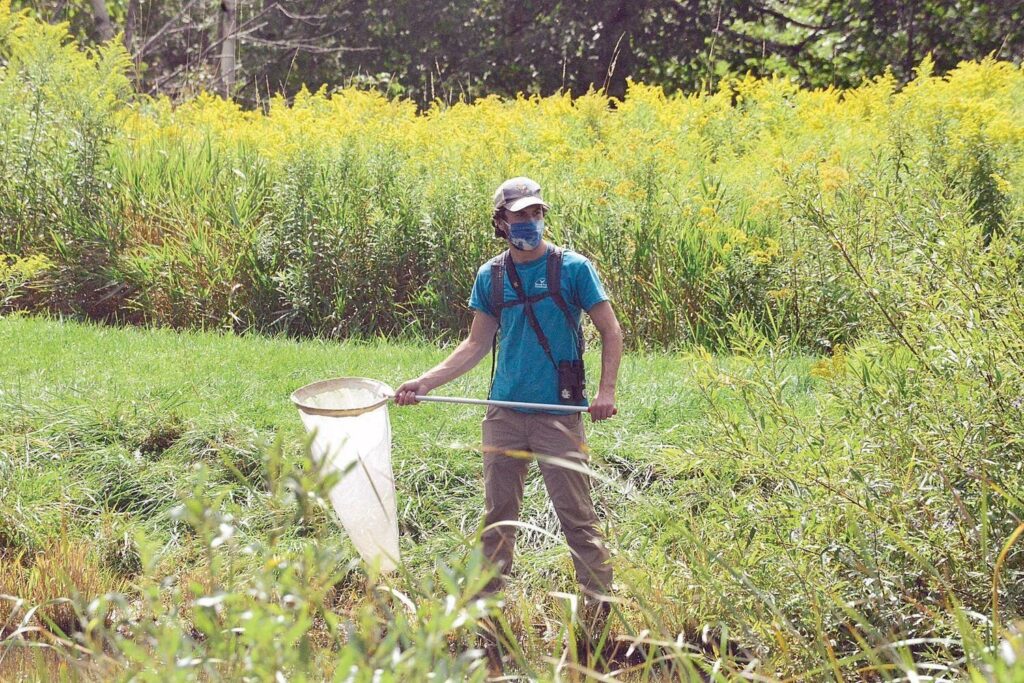
Dylan has been at Merck for over eight years and ran the sugaring operation for five of them. The new timber frame building is now up and running, helping mill the harvested trees into lumber. He said some of it may be used in remodeling some of the cabins.
“We’ll repurpose what’s there and then build something that will work in that location,” he said. Pointing to the stack of lumber piled on one side of the building, he noted that it came from trees George Merck himself planted many decades ago.
There’s an interesting difference between the old-growth trees used to build the Harwood Barn almost 200 years ago and the new growth being harvested now, he says, pointing to the growth ring pattern on a tree getting ready for milling. The ring patterns on the old-growth trees are much tighter than the ones on the younger ones they are cutting now, indicating the older trees expanded more slowly than the newer ones because they were already mature. The younger new growth trees filling the forest back in grow more each year, showing wider gaps in the rings that indicate their age. But the smaller, old-growth ring pattern gives greater stability than their younger cousins, which helps explain, to a degree, why some of the older buildings, like the Harwood Barn, are still standing.
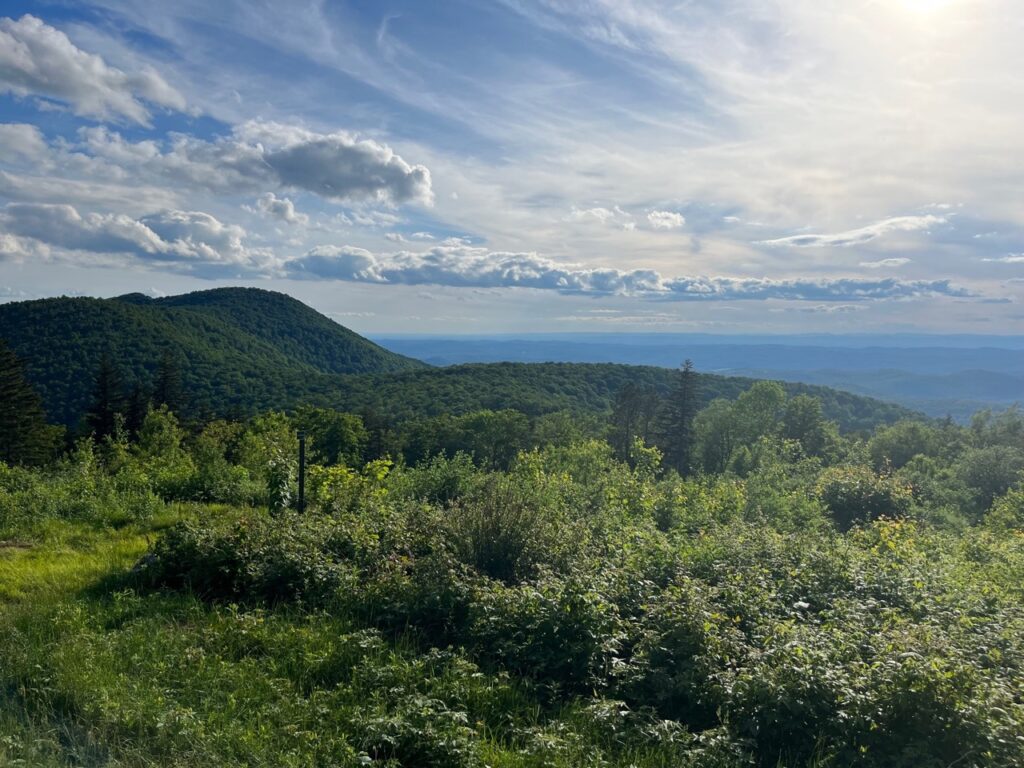
“A lot of the work we do, all those (timber) harvests are done in a way that allows us to use research that’s already been done … to help make decisions about the trees we will harvest so that we increase both structural and age class diversity so that similar conditions can return to how they grew naturally over those 12,000 years,” Rob Terry, the executive director, said.
And yes, climate change is a concern and having a noticeable impact. Rob says the evidence is readily at hand: Weather patterns are changing, creating biological and ecological change, which in turn influences the migratory patterns of wildlife that pass through the forest.
“Migration is happening, climate change is real – that will continue,” Rob said. “A lot of species will be moving through this hourglass-shaped corridor.”
The goal is to have the Merck Forest and Farmland Center be as much if not more of a magnet for visitors 75 years from now, and adapting to whatever environmental change comes along to provide the future forest its best chance of thriving.
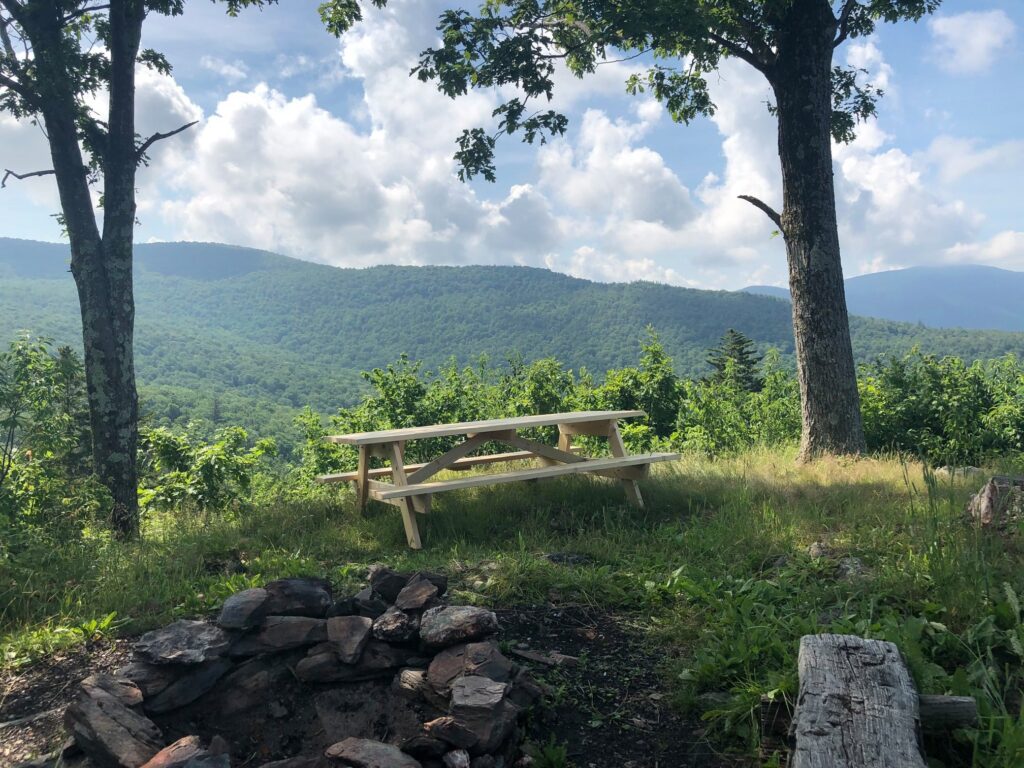
“There are tremendous opportunities for us to collaborate with a variety of organizations and the state (of Vermont) to this about what we’re doing with a broader audience but also deepen relationships with local communities so that we help folks who live in this space understand it and engage more deeply,” he said.
Hopefully, a future couple like Ethan and Tori will find it the right place to agree on that major question that shapes life together.
As Merck marks 75 years of stewardship, the forest continues to grow, quiet and sure. The cabins still stand, weathered but welcoming. The trails lead on.

Originally from Yonkers, N.Y., Andrew arrived in Vermont for the first time in 1960 and lived in Pownal Center, Vt. After graduating from UVM in 1973, he returned to New York where he worked in the commercial photography business, eventually becoming a history teacher at a school in Brooklyn.He and his wife Linda returned to Vermont in 1987, to own and operate a retail gift shop started by Linda’s parents. He went into journalism full time in 2001, writing for the Bennington Banner. He became the editor of the Manchester Journal in 2006. In 2016, he became the news director at GNAT-TV, when the community access station launched a news operation called the News Project. He retired last year – sort of. He contributes work to both GNAT-TV and Vermont News & Media as a freelancer.
